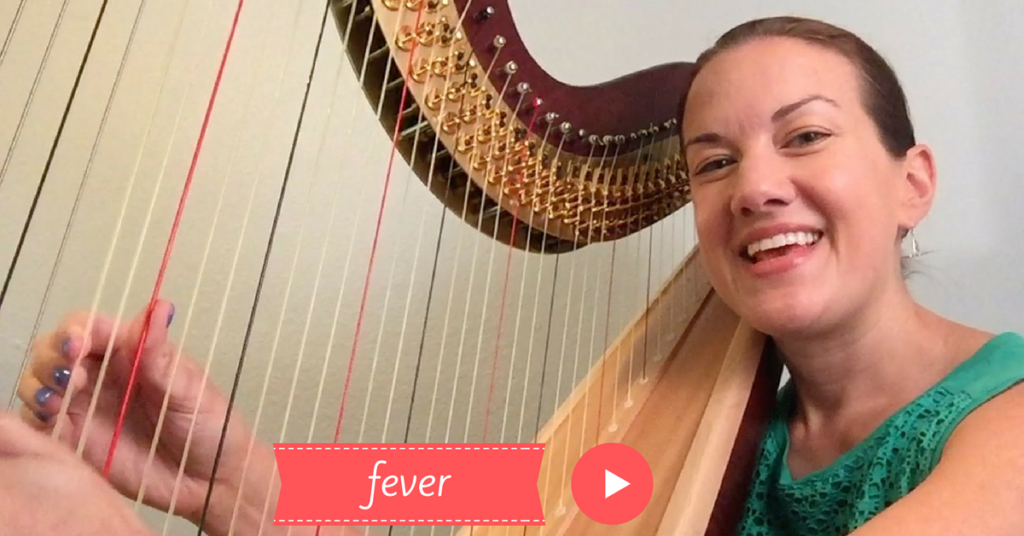Frustrations & How to Overcome!
Any of this sound familiar?
1.You are never singing the melody but
2. You are always tempted to sing the melody
3. Because the sopranos are too loud which makes
4. it difficult to find your part and when you do
5. No one can hear it because
6. There are never enough altos so you
7. Sing louder which ends up causing you to
8. Crack on the high notes and then you
9. Get lost in the music
10. Plus, there is never a solo alto part and
11. Worst of all, your part is either the same note measure after measure after blasted measure, or every accidental and weird interval jump in the book.
Wanna solve these frustrations?
Good! Let’s dive in:
 1. You are never singing the melody.
1. You are never singing the melody.
Our ear naturally hears the melody line so instead of trying to tune it out, listen to how the alto line fits with the melody.
Take a look at the accompaniment (what the piano is playing) and see if the alto part is doubled in that music.
Also, look at where the alto line and soprano line are singing together, that way if you accidentally end up singing the melody (it happens to all of us!) you know where you can catch the alto line again.
 2. You are always tempted to sing the melody.
2. You are always tempted to sing the melody.
This is especially true in songs where you sing the melody line with the sopranos for the first verse and then later divide into the harmony part.
In that case, you have to remember when it’s ok to sing the melody and when it’s not. Sometimes just writing yourself a simple note (no pun intended) like “melody” or “harmony” will help you remember.
But it becomes REALLY difficult when it’s a song like Jingle Bells that you’ve sung the melody line to literally your whole life and now you have to learn a whole other way to sing it!
In that case, recording yourself singing the alto line and then listening to it on repeat is the best way to ingrain it into your brain.
 3. The sopranos are too loud.
3. The sopranos are too loud.
If it is hard for you to carry the alto line while sitting next to people that are singing melody seriously consider moving to a more central part of the alto section.
If that is not an option look to see if your alto note is also in the piano part and listen to the accompaniment for help.
 4. It is difficult to find your part.
4. It is difficult to find your part.
Find places in the music where the alto line and soprano line share a common note.
That way if you get lost (and it happens to everyone at some point) you can catch the part again when it intersects with the soprano line.
Use those places as jumping off points to reset your singing when it gets off track.
 5. No one can hear the altos.
5. No one can hear the altos.
Take a deep breath, stand up straight, and hold your head high. Even if you are lacking confidence in the notes a “strong and wrong” approach (in rehearsals!) is recommended by every choir director I know.
If you are holding music or a choir folder make sure that your mouth is above the folder, otherwise you are just giving a private concert for yourself and it won’t go anywhere else!
For more on this, check out the article, what your choir director wished you knew.
 6. There are never enough of you.
6. There are never enough of you.
So true! If you are having fun in choir (and I hope you are!) then consider inviting friends to join you.
Ask about opportunities when the choir can have a social and bring other prospective members in or even an open rehearsal where anyone can come.
Christmastime is a good opportunity to recruit because singing carols is something many people enjoy!
 7. Sing louder.
7. Sing louder.
It is sometimes cathartic to sing loud and blast your part into the ears of the people around you.
But if you are doing that at the expense of your voice (if you are hoarse the next day) then please stop and consult a vocal professional.
Music is a realm where the old adage “no pain, no gain” is absolutely NOT TRUE.
Throat pain is ALWAYS an indication to stop. Listen to your body and take good care of your instrument.
This vocal recovery resource is a must!
 8. Crack on the high notes.
8. Crack on the high notes.
See #7 and also make sure that you are warming your voice up to AND ABOVE the highest note you will need to sing.
While it is smart to save your voice and not overtax it by singing high notes over and over, warming up is a necessity to ensure you will be solid on the notes when performance time comes!
Read more here on vocal recovery.
 9. Get lost in the music.
9. Get lost in the music.
This is especially a problem while sight-reading a new piece.
The codas, repeat signs, and second endings can be really tricky.
If at all possible, look through the entire piece before beginning and mark any points where you will need to return to a chorus or skip forward to a coda.
 10. Never a solo alto part. 😖
10. Never a solo alto part. 😖
This is a common complaint among the lower voice parts.
While it is easiest to give the sopranos a solo (they often have the melody anyway) here are two creative solutions to getting solos as an alto.
The first is to try taking the solo down an octave. If you can comfortably sing it in that range, audition for the solo.
The second is to audition for a tenor solo. The alto voice is often in a similar range and it can be very effective to spread the solo love among all of the sections.
 11. Your part is either the same note or all accidentals and weird interval jumps. 😩
11. Your part is either the same note or all accidentals and weird interval jumps. 😩
Yup. Be ready, life is always interesting in the alto section!
If you want to become a master at reading music and singing those intervals with ease, the choir confidence course is a must! Learn more about it here.
Above all, enjoy the camaraderie of choir. There is truly nothing else like it!
April Ebeling started her professional singing career as lead vocalist with the U.S. Navy Band and holds several degrees in music. She loves connecting people through shared singing experiences and helping altos around the world develop confidence in their singing through online courses and articles like these.



 ” />
” /> ” />
” /> April Ebeling is passionate about making music and helping others to do the same. She helps altos around the world develop confidence in their singing through
April Ebeling is passionate about making music and helping others to do the same. She helps altos around the world develop confidence in their singing through 
 1. You are never singing the melody.
1. You are never singing the melody.